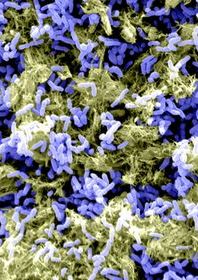Biofilms explainer
20 February 2019 publication
Biofilms are communities of micro-organisms that stick to each other and to surfaces. They form in aqueous environments when free-floating micro-organisms attach and adhere to surfaces in response to cues in the environment such as changes in pH and nutrient concentration. The biofilm matures as attached micro-organisms multiply, colonising the surface and recruiting new members which are embedded in self-secreted extracellular polymeric substance (EPS), a sticky slime-like material consisting of DNA, polysaccharides, and proteins, forming a structured 3D matrix.
The composition and architecture of biofilms are complex and diverse. They may consist of one microbial species or mixed species such as bacterial and fungal – although at present the majority of research focusses on single and multi-species bacterial biofilms – and these act as an organised community, sharing resources for growth and survival. For example, chemical gradients can form that allow for nutrient exchange and waste removal via a network of channels.

